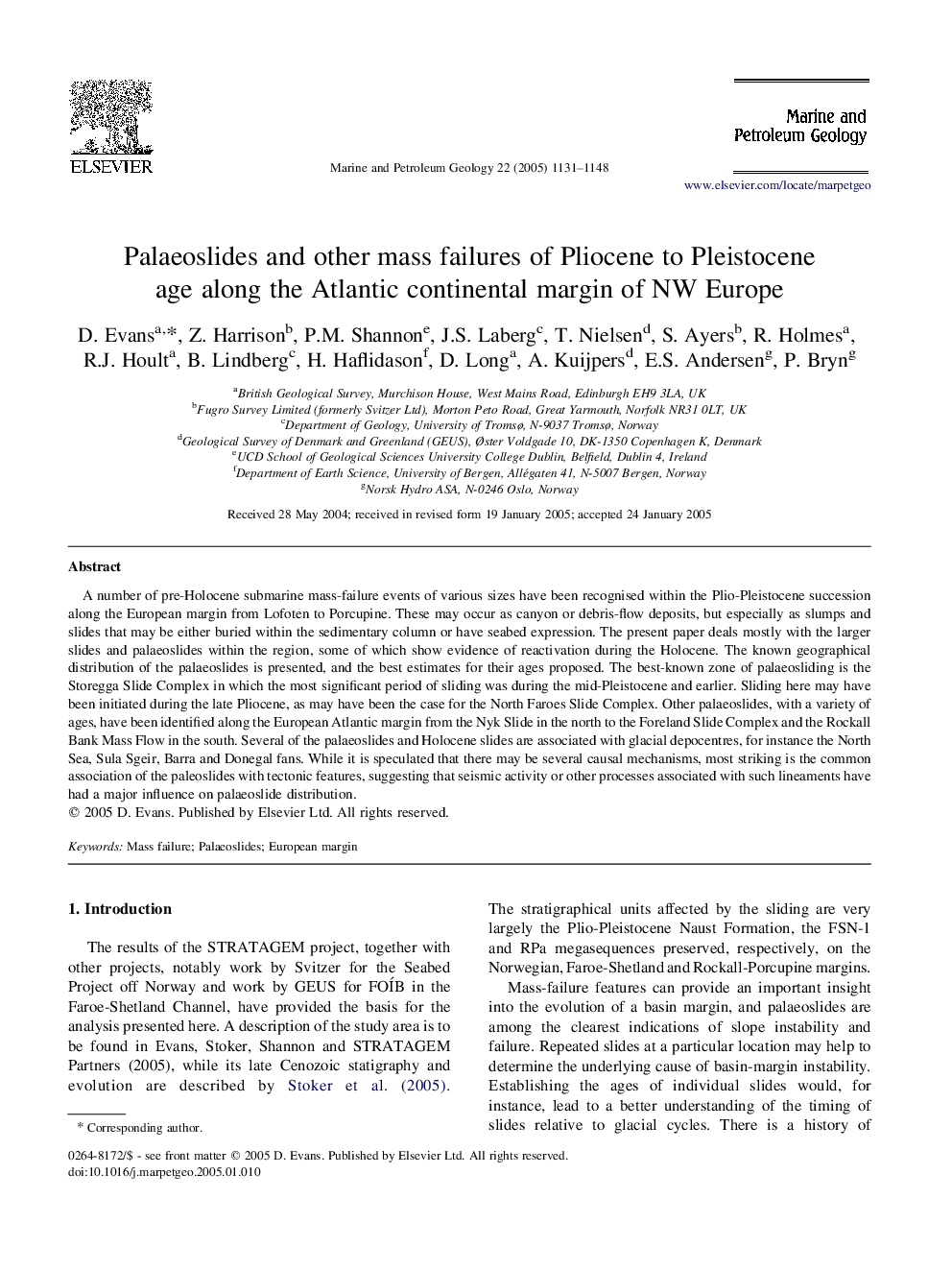| Article ID | Journal | Published Year | Pages | File Type |
|---|---|---|---|---|
| 9528517 | Marine and Petroleum Geology | 2005 | 18 Pages |
Abstract
A number of pre-Holocene submarine mass-failure events of various sizes have been recognised within the Plio-Pleistocene succession along the European margin from Lofoten to Porcupine. These may occur as canyon or debris-flow deposits, but especially as slumps and slides that may be either buried within the sedimentary column or have seabed expression. The present paper deals mostly with the larger slides and palaeoslides within the region, some of which show evidence of reactivation during the Holocene. The known geographical distribution of the palaeoslides is presented, and the best estimates for their ages proposed. The best-known zone of palaeosliding is the Storegga Slide Complex in which the most significant period of sliding was during the mid-Pleistocene and earlier. Sliding here may have been initiated during the late Pliocene, as may have been the case for the North Faroes Slide Complex. Other palaeoslides, with a variety of ages, have been identified along the European Atlantic margin from the Nyk Slide in the north to the Foreland Slide Complex and the Rockall Bank Mass Flow in the south. Several of the palaeoslides and Holocene slides are associated with glacial depocentres, for instance the North Sea, Sula Sgeir, Barra and Donegal fans. While it is speculated that there may be several causal mechanisms, most striking is the common association of the paleoslides with tectonic features, suggesting that seismic activity or other processes associated with such lineaments have had a major influence on palaeoslide distribution.
Related Topics
Physical Sciences and Engineering
Earth and Planetary Sciences
Economic Geology
Authors
D. Evans, Z. Harrison, P.M. Shannon, J.S. Laberg, T. Nielsen, S. Ayers, R. Holmes, R.J. Hoult, B. Lindberg, H. Haflidason, D. Long, A. Kuijpers, E.S. Andersen, P. Bryn,
